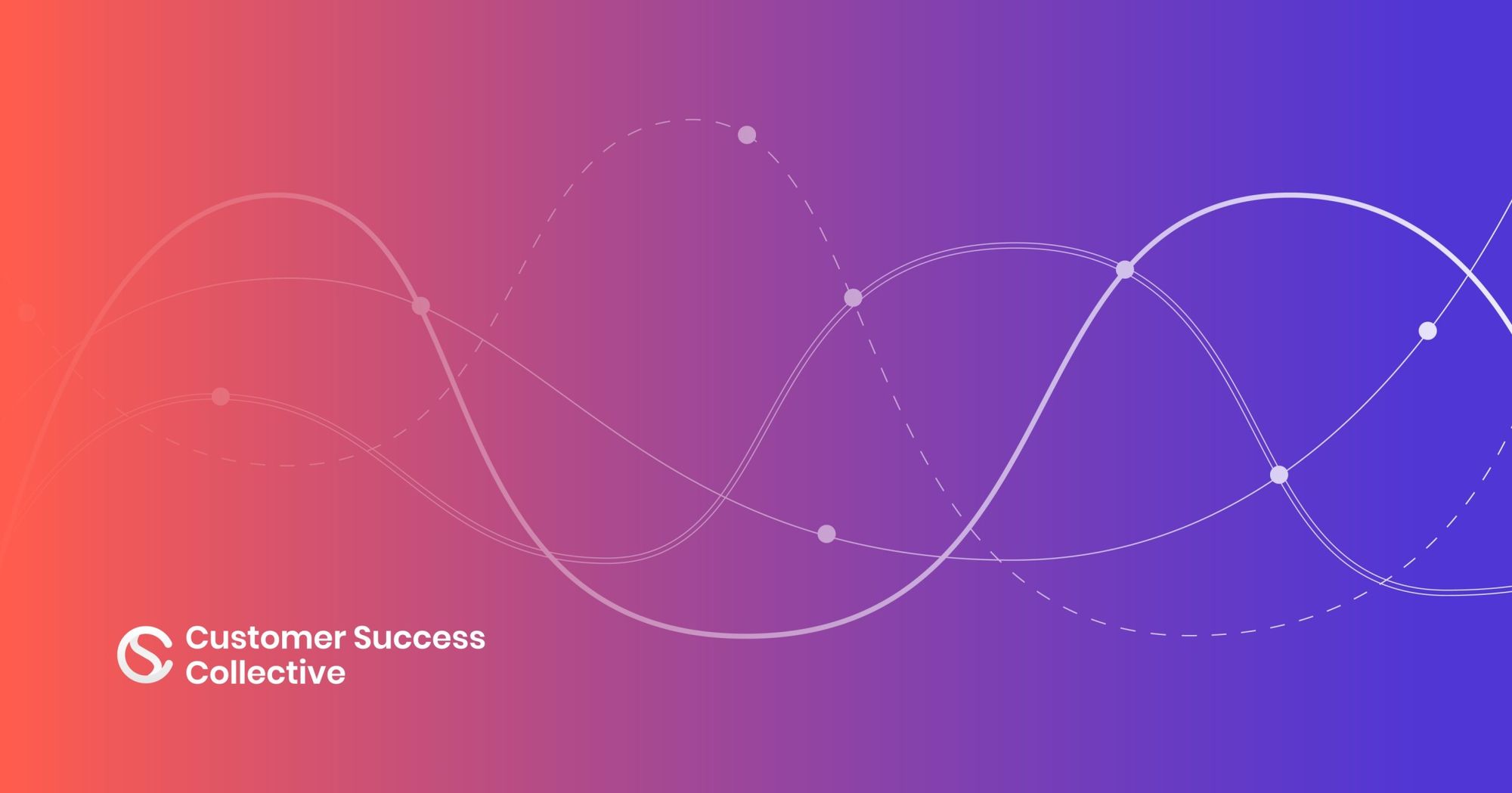This article was transcribed from a presentation at our Customer Success Festival in San Francisco in September 2022.
You can only improve what you measure. I’ve been thinking about this a lot lately, and it’s especially relevant in light of all the industry trends we’ve seen over the last few years.
First, there was the Great Recession, then there was the Great Reshuffle when a lot of talent switched jobs to move into hybrid setups. Right now, we’re in the Great Rationalization.
Over the last couple of years, companies have bought a lot of software tools, and now CEOs, CFOs, and CIOs are questioning whether all that spending is necessary and if more tools really equal more value. If there was ever a time for you to measure the value your team provides to your customers, it’s now because your customers are asking these tough questions too.
Finding your CS organization’s purpose
Before you think about what the metrics for a customer success (CS) organization should be, the first question to answer is why does the CS team even exist? I'm not being facetious – there isn't an easy response. A lot of companies just cobble together a CS organization and run with it. I think it’s worth taking a step back and looking at the key reasons for our existence and the problems we’re trying to solve.
Gainsight did a survey a few months back about what the CS teams can contribute, and net retention rate seems to be amongst the top contenders for our reason for being. Product adoption and product utilization also came up. In companies with very sticky products where you're not worried about net retention rate and other metrics, the primary thing is to get more advocates and promoters out of the equation.
As you think about what to measure, it’s also essential to consider these two facets of delivering customer success:
- The outcomes that your product or service delivers to your customers
- Your customer’s experience of working with your company, products, and services
Think of it like this: when you’re taking an Uber to the airport, getting from point A to point B is the outcome. But if the driver’s playing music you don't like, unfortunately, that’s it impacts your experience. That translates into the B2B world; it's equally important to deliver on both facets if we want to build long-standing relationships with our customers.

How to introduce metrics to your CS organization
Once you’ve identified your CS function’s core purpose, it’s best to take a phased approach when introducing the corresponding metrics. You can't start a CS team from scratch and immediately start measuring them on net retention rate or product adoption. If your team is in its early stages, these are deeply unsexy metrics; however, they are critical, so you will need to introduce them as your organization matures.
Phase one
In phase one, you want to keep your metrics simple. Is your team getting on calls and doing business reviews? If you want them to do training for your customers, how many training sessions are they doing each month? These are the kinds of metrics you want to start with.
Phase two
Ideally, you can move to phase two very quickly and start talking about the leading indicators of your objective function. These would typically translate to product adoption, health score, and any net promoter score (NPS) type metrics that are influenced by what the Customer Success Manager (CSM) does.
It’s worth keeping in mind that NPS is a composite metric. Lots of variables go into why someone decides to recommend your product or not, and the product itself plays a huge role in that. In addition, a customer’s experiences with the account team, the support team, and a bunch of other services all go into that mix.
Lots of research suggests that in B2B businesses NPS is not correlated all that strongly with churn. However, it is heavily correlated to growth and expansion. Basically, if people get good outcomes, they will continue to spend the same amount of money they did last year, but they won't commit additional funds unless the experience is excellent too.
Thinking about all of these pieces, one best practice that has worked for me across companies is following up when people respond to NPS surveys. People typically respond to surveys when either they've had an awesome experience and they want to tell you about it, or they've had a terrible experience and they want to tell you about it. In either of these situations, closing the loop with the customer is key.
If you did something really well, your promoters can help you understand that on a deeper level and replicate that success. On the flip side, if something bad happened, your detractors can help you learn from it so you don’t repeat the same mistakes going forward. Regardless of what you're trying to achieve, that is a best practice I would highly recommend.

Phase three
For many CS organizations, phase two is their natural resting state. These are the metrics that they spend most of their energy on. However, if adoption, health score, and NPS are the only metrics you focus on, eventually your CFO is going to wake up and start asking what you actually stand for and whether you’re a cost center or profit center. You want to move into phase three before that happens.
At this point, thanks to your CS team’s activities, your product adoption, health score, and net promoter scores should be improving, and that should lead to increased value or financial returns. Congratulations! By tracking and demonstrating this value, you’re entering phase three.
You can now stake a claim and tell your CEO, “Because the CS team exists, the ROI or outcomes delivered to our customers went up by X percent, which resulted in our gross retention and expansion going up.” That’s the end state you want to land in.
How long it takes to get from phase one to phase three varies, but typically new CS organizations should spend six months or so learning the ropes in phase one. It will then take anywhere from six to 18 months to refine your activities in phase two.
You can start measuring phase three approaches while you’re in phase two, but you won't know yet if you can predictably and consistently deliver on phase three objectives. That’s why it’s crucial to take a phased approach rather than jumping straight into phase three with a new team – you can't control for the input variables that lead to ROI for your customers that early in your journey.

Cost metrics for your customer success organization
As well as paying attention to input-output metrics, a mature CS organization needs to think about cost metrics. When it comes to such metrics, CS teams often think about the cost of retaining a customer (CRC), which roughly translates to CS’s overall cost divided by the revenue managed by that part of the business.
Oftentimes, people will also look at the revenue managed per CSM, or the number of customers managed per CSM. Those are also good metrics, but I prefer CRC because there are benchmarks associated with it that you can start thinking about and use to plot where you are versus where you want to be.
According to a recent survey, the median CS cost-to-revenue ratio is about 6%. It’s a good exercise to think about what that cost looks like for CSMs in your purview. If you’re at 3%, you’re in the 25th percentile. If your figure is closer to 10%, you’re in the 75th percentile. How you stand will depend on a lot of factors, like your product’s stickiness and how mature the industry you're selling into is, but this gives you a rough benchmark to work from.
In my experience, CS’s cost-to-revenue ratio trends towards the higher side of the spectrum in early-stage companies. That’s in part because your first few CSMs tend to be unicorns – you expect them to do everything and then some more, right? You hire much higher-quality candidates, and it's harder to scale their activities.
The cost-to-revenue ratio also depends on what the CS team is trying to solve. I've seen early-stage companies where CSMs are almost extensions of product managers. Their primary job is to help find product-market fit by being the voice of the customer and telling the product team which use cases work and which don’t deliver value.
In that model, you’re going out of your way to invest in product management capabilities, and hence your cost to retain customers will be higher. However, once you attain a product-market fit and you’re starting to scale the business, you can start looking at different purposes for the CS team.

The customer success metrics your peers are tracking
According to a recent survey of Chief Customer Officers, 50% of companies in phase two view product utilization metrics such as monthly active users and daily active users as the ideal metrics for that stage of their growth.
As with NPS scores, you always want to dig into the “why” behind any changes in your utilization metrics. Let’s say your usage is trending downward – there could be a bunch of reasons for that. Some businesses have a seasonality to them, so you need to ask yourself if this is to be expected or if this truly indicates a lack of engagement that you have to do something about. Digging into historical data will help you answer that question.
If the downturn in your product’s usage truly is an aberration and not just a seasonal trend, the next step is to create playbooks containing four or five different plays for your CSMs to try. Some of those plays may work in your customer context; some may not. By experimenting, you'll soon learn which are best for your business.
Sometimes your plays will give you a quick spike back in monthly usage but create no sustainable impact, so it’s essential to look at this metric through a long-term lens. Did the cohort of customers whose usage dropped then went back up again actually sustain over a 12-month period? If not, you want to factor that into your CS plays as your organization matures.
Moving on from utilization metrics, CSAT scores were also frequently cited by Chief Customer Officers as being among the main metrics they track in phase two. Then, as they enter phase three, many companies start to focus on net revenue retention as their main financial metric. On the other side of the coin, churn is also commonly tracked by companies at this stage.
If you cater to one segment and your average contract value per customer is fairly standard, customer logo churn might be a good proxy for you to look at as well. However, if like many companies, you serve both enterprise and SMB segments, logo churn won’t show you the full picture.
Key takeaways
- Before you think about metrics, think about the purpose of your organization. Is it to improve product utilization? Is it to improve customer satisfaction? Is it to drive growth opportunities? What is the main objective function that you want to work towards?
- Look at both outcomes and experience metrics – not just one.
- Take a phased approach to implementing metrics – start with activities before graduating to leading indicators and then lagging outcomes.
- Track your cost metrics – sooner or later, your CFO is going to ask you for them. Plus, it's just good business practice.
Did you like this article?
If you enjoyed learning from Ashvin and want to continue your education on customer success metrics, we have just the thing for you.
We host a number of Customer Success Festivals throughout the year – both in-person and virtually – where you can attend incredible talks like this.
As well as absorbing the insights of CS legends like Ashvin, you get the opportunity to expand your professional network by mingling with speakers and attendees after the sessions!



 Follow us on LinkedIn
Follow us on LinkedIn




